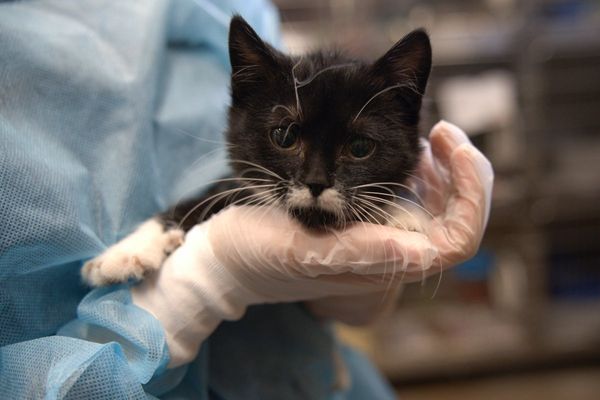
“How do you enforce a one-way street for ants?” Crikey asked Macquarie University ant behavioural expert Dr Cody Freas.
“There’s a ramp here,” he responded, pointing to a two-metre-long gentle gradient on one side of a makeshift ant ring.
“But how do you enforce that?” Crikey pressed.
“What they really want is to get home as quickly as possible. So, if they have food and a straight path back to the nest, these ants should always go up and over the ramp,” Freas said.
Freas is part of a small Macquarie University team that’s one week into a three-month Alice Springs-based research project investigating “turn-back” behaviours of two species of ants — the red centre exclusive red honey ant and the more common desert bull ant.
They wanted answers on how forager ants oriented themselves in relation to the nest and just how quickly they could reorient when mental maps and in-built compasses were deliberately thrown out of whack. That process involved electromagnetic coils that flipped north and south, which put the sun and other geographic checkpoints in the wrong place; ant arenas with shields, screens (and ramps) to obfuscate views and issue a complete overhaul of the visual landscape; and a ground-level lazy Susan that displaced ants with a simple quarter-turn swivel.

“What we’re really interested in is how these guys quickly learn those cues to immediately get back to the nest. They can’t be out for very long or they’ll die from the heat, so they need to be extremely good navigational learners,” Freas said.
The researchers were primarily focused on the stop-start behaviour of forager ants (workers charged with finding and retrieving food for the nest). No ant is born a forager, but it’s a natural career progression for them to become one. Following a month of “safe” inside shift work caring for larvae and running nest maintenance, ants graduate to the much more dangerous task of foraging outside the nest.
As part of formal self-induction proceedings, forager ants typically take themselves on “learning walks” where they walk a certain distance, stop, look back over their shoulder for half a second to orient themselves towards the nest and familiarise themselves with landmarks near the nest, and then keep walking. These walks gradually increase, and after three to five rounds, they deem themselves fit and able to forage.
Freas described this as an “end of life job”, with ants not likely to last more than five days on the books: “They’re either being eaten or they’re getting exhausted. Even though they’re one of the most heat-tolerant species of ants in the world, the sun’s so hard on them. You’ll see ones nearing their five days shaking as they’re moving. That means they’re breaking down.”
In man-made arenas, daily nest-to-food-to-nest field trips were much quicker due to proximity and plenty of food stock. As a result, forager ants typically lived much longer — two to three weeks. Their diets (under experimental conditions) were a healthy combination of crushed-up cookies (carbs) and cut-up mealworms (protein). Freas said cookies had not been particularly popular with ants thus far but caveated that it was common practice for appetites to chop and change throughout the season.
“Usually each year, at a certain point, they just get full of carbs. They’ve got three packets worth of cookies in the nest, they’re completely satiated, and some signal goes out through the nest, which is ‘No more, only protein now’. They’ll never say no to protein.”

Although it was early days in their research, Freas said the team were already noticing some behavioural patterns in the ants — both change of scene and discovery of food prompted ants to do a geographical stocktake. The latter finding was particularly ground-breaking as it challenged existing literature that ants would “turn-back” once in possession of food.
“The turn-back is highly choreographed, like a dance move. Step, stop, step, stop, step, stop longer, maybe a little bit farther, and then they go back and move forward. We call them fixation phases, where their head is still at each point. And it’s thought that as they’re doing that they’re checking their orientation,” he said, adding that it was like a human walking through a door where all of a sudden the landscape changes. “They’re looking back at the door.”
What the researchers observed was that the ants saw food, turned back to the nest, collected the food, and then turned around (not back) to go home. Turn-backs and turn-arounds were two very different things, Freas said. The former was deliberate and the latter was instinct.
Because of the climate, these ants were very much visual learners. During the summer months, they were active — the ground was too hot for pheromone trails (any chemical residue from family, friends, and esteemed colleagues evaporated immediately) — leaving them to their own navigational devices. Although the heat also accelerated their deaths, it did benefit food stocks as insects that landed on the hot ground died within seconds.
“If that’s not happening, there’s no point for them to be out,” Freas said, adding that’s why Crikey had seen so few. Big storms had flushed out arenas, wilted cardboard sets, and made the ground both sodden and cool.
Any sign of bad weather and the red honey ants shut up shop. Put simply: unlike ants that live in wet environments and “can deal with being in a puddle”, these desert dwellers hate the rain. They can’t swim and “almost instantly” drown.







